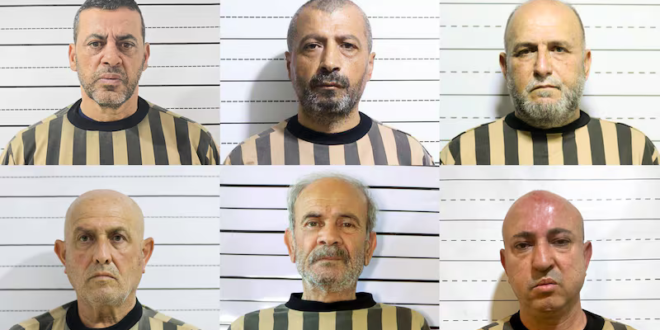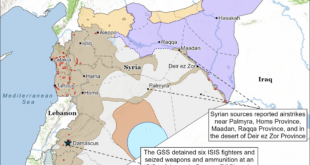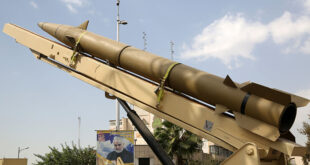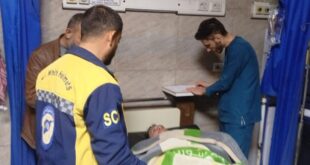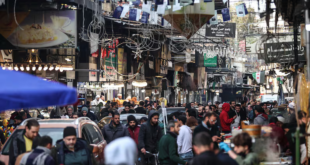High-profile figures from the former regime are being captured by the authorities in Damascus
Former warlord Ghazwan Al Salmoni carved a niche in the Syrian civil war, commanding an abduction and extortion ring that specialised in ambushing lorry cargo traffic near his home in the centre of the country.
He held absolute power as a commander in the National Defence Forces, a key regime-aligned militia, in the northern village of Sabburah, on the main route to a Kurdish militia stronghold in the Badia desert, which maintained business ties with the former government.
In July last year, former president Bashar Al Assad appointed Mr Al Salmoni as a parliamentarian, a reward for loyalty that provided immunity from prosecution. The status of both men evaporated when the Alawite-dominated regime was ousted five months later, replaced by Hayat Tahrir Al Sham, a former splinter group of Al Qaeda, and then a new administration.
Over the last two weeks, security forces have raided Sabburah almost daily in a hunt for Mr Al Salmoni, part of a new campaign to capture high-level personnel in the former system.
“Every stone is being turned to find Al Salmoni,” said a local lawyer, who did not want to be identified, pointing out the arrest of 40 men in Sabburah on suspicion of having information on his whereabouts.
Among them is Mr Al Salmoni’s father-in-law. His name is Tamer Al Asaad, and he was a local official in the former ruling Baath Party. Salman Huneidi, an Alawite sheikh close to the two men, was also captured. “About the only people they are not arresting are the women,” the lawyer told The National.
The campaign gathered momentum only last month, sparked partly by popular anger over perceived negligence of the issue by the government. The new government has been focused on consolidating power and dealing with challenges to its authority in outlying areas, as well as securing financial resources.
Since June 21, the authorities have announced the arrest of seven wanted men, who were either security officers or militia leaders. Four of them are Alawites while the rest are Sunnis.
Despite mass defections from the regime following the 2011 revolt against the Assad dynasty, many Sunnis remained in the security apparatus, helping Mr Al Assad in his war against their co-religionists.
Increased intelligence gathering
Thousands of people believed to be wanted for war atrocities remain at large, although the government has not made a list public. Russia, the main backer of Mr Al Assad, flew the former president and his more senior lieutenants to Moscow when the old order collapsed in December, placing them out of reach.
However, the capture of the key seven figures reflects an increase in intelligence gathering capabilities by the new central order, insiders said, pointing to the use of surveillance drones, cyber spying and a build-up of local links.
“We have only a fraction of the capacities of the former regime, but we are starting to get to these people,” said one source who has been tracking the fugitives.
Managing the campaign is a team of operatives drawn from the core of the HTS intelligence division. They are being helped by Turkish security personnel, although “the Turks are more concerned about potential insurgency threats” to their new ally in Damascus, rather than individual captures, a regional security official told The National.
These operatives had played a main role in eliminating HTS rivals in Idlib, particularly after the group’s former chief, current President Ahmad Al Shara, broke off from Al Qaeda in 2014.
Of the seven, the most notorious is Waseem Al Assad, a distant cousin of the former president who ran a major narcotics cartel and the Baath Brigades militia. The Interior Ministry described him as “one of the top narcotics dealers and criminals in the bygone regime”.
But the remaining six are also well known in Syria.
Mizr Suwan was arrested last month, Syrian state media reported, while on Wednesday the Interior Ministry said Brig Gen Rami Ismail, “responsible for many violations against civilians” as head of Air Force Intelligence in Latakia and Tartous, was arrested while attempting to flee Syria.
Brig Gen Ismail and Waseem Al Assad, both Alawites, have been captured because Sunni informants they once collaborated with have turned against them, the sources said. Mr Al Salmoni could fall the same way, they added.
Hiding in cave areas
The three men were involved in illicit activity, either directly or by taking cuts from smugglers, who are mostly Sunni: Bedouins in the desert, sailors on the coast where Mr Ismail was stationed, or rural inhabitants of border areas with Lebanon that formed part of Waseem Al Assad’s drug empire.
A Syrian security official said that information provided to the authorities by smugglers was key to the capture of Waseem Al Assad on June 21, on his way to the border with Lebanon. Smugglers also told the authorities about Brig Gen Ismail’s plans to flee Syria by sea. Bedouins helped capture many of Mr Al Salmoni’s network in the last two weeks.
“They enriched themselves by working with the Alawites, but their allegiance remained Sunni,” said the official, who did not want to be named.
The two remaining Alawite officers were also arrested near the coast, the heartland of the sect. They were Maj Gen Mowaffaq Al Haidar, whose Third Tank Division manned a roadblock between Damascus and Homs that was known as the “roadblock of death”, and Col Thaer Hussein, an assistant head warden at Sednaya Prison. He was captured in a “precise operation”, according to the ministry.
The mobile phones of the two men were hacked, the sources said. They were also relatively easy prey because they hid in built-up areas of the coast.
The three Sunni ex-officers were also captured quite easily. They had returned to their home regions but were unable to find allies to sustain them, the sources said.
Col Ziad Kokash, one of the three, was handed over by two of his cousins in his home village of Termanin in Idlib province, a source said. The Interior Ministry said Col Kokash was “involved in war crimes” and even volunteered after his retirement from the army in a division that attacked rebel areas.
Of the thousands of former Alawite commanders, many had taken refuge in the wooded and cave areas of the mountain overlooking the Mediterranean, known as Jurd.
Despite an increased use of drones, the security forces have had little success in Jurd areas, even during a coastal incursion in March in which HTS-allied forces killed at least 1,300 Alawite civilians.
The impregnability of the area has prompted the authorities to seek information from a large pool of ex-officers who have returned to their homes and have shown no resistance to the new order.
One such case is that of former Air Force Brig Gen Gazi Salman, who has been arrested several times in his home village of Marana. The town is known, even among Alawite circles, for its close ties to the ruling class, with many of its men becoming officers since the 1960s.
However, Brig Gen Salman was in charge of maintenance, another former officer said. His repeated arrests have been purely to extract information from him about “more important officers”, such as their phone numbers and possible hiding places.
 Eurasia Press & News
Eurasia Press & News
